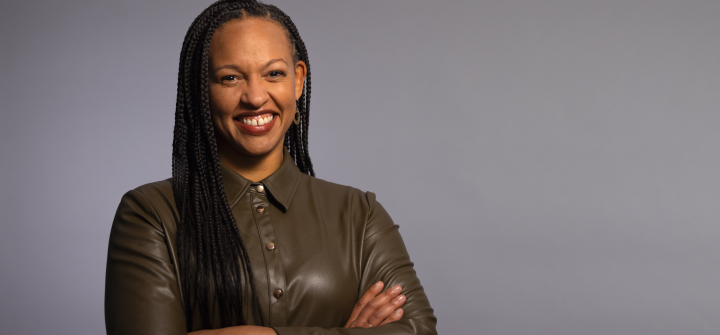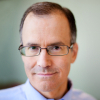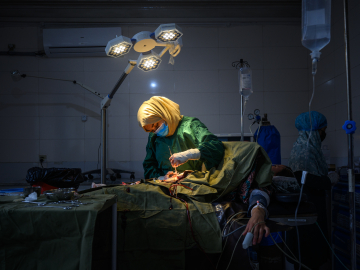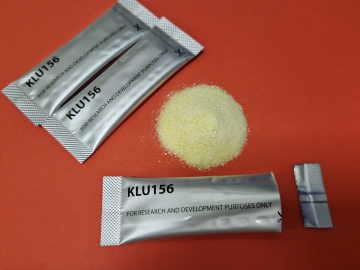Michelle Morse: How to Protect the Health of 8 Million New Yorkers
Michelle Morse took on a tough job in mid-October when she was named New York City’s acting health commissioner. The responsibilities she inherited from former commissioner Ashwin Vasan include improving life expectancy, following trends in health threats, and running a department with 7,000+ employees and a $1.6 billion budget.
And, of course, working to protect the health of 8 million New Yorkers.
Morse, MD, MPH, had joined the Department of Health and Mental Hygiene in 2021 as the city’s first chief medical officer and led efforts to end the inclusion of race in health care algorithms that led to poor results for people of color. The work landed her on STAT’s STATUS List 2024 and this year’s TIME100 NEXT list.
In an interview with GHN in the department’s Long Island City office, Morse discussed her priorities, how her global health experience influences her work today, and how she’s preparing her department for changes coming from the new administration in Washington, D.C.
What are some of the biggest health challenges in the city that you’re focused on?
We recently launched a whole campaign focused on exactly that question: How do we set priorities? Where are we trying to go together as a city in public health? That campaign is called Healthy NYC. It was launched about a year ago under former commissioner Vasan, and there are seven main drivers that are the areas of focus. [The seven drivers are: Heart- and diabetes-related diseases; screenable cancers; drug overdose; suicide; homicide; Black maternal mortality; and COVID-19.]
The goal of Healthy NYC is for us to achieve at least 83 years for life expectancy by 2030 across New York City, with gains across all racial and ethnic groups. [Life expectancy plummeted during the COVID-19 pandemic from 82.6 years in 2019 to 78 years in 2020, and popping back up to 80.7 in 2021 (the latest official data).]
What’s another priority for you?
In the spring, we’re going to be focusing even more on specific racial equity related goals within the Healthy NYC goals. Part of the reason for that is because Black New Yorkers have always had the shortest life expectancy of all racial and ethnic groups—that’s been true since we could measure it, basically. And Black New Yorkers lost a lot more life expectancy than other groups during the COVID pandemic. That is a problem. I think it’s been looked at with indifference … for a long time. We feel like this is actionable, there’s something we can do about this. Why should we accept that Black New Yorkers’ life expectancy be five or more years lower than everyone else’s?
What specific initiatives do you want to advance?
Multiple former commissioners—we have all been aligned on this strategy of focusing on both race and place, and often those things are connected. This is not necessarily a strategy that would only prioritize Black New Yorkers. It would prioritize the organizations that serve Black New Yorkers, it would prioritize the neighborhoods that serve Black New Yorkers, and it would prioritize different areas that we know are a leading cause of death amongst Black New Yorkers.
For example, Black maternal mortality is one of the seven drivers in Healthy NYC, and Black women and birthing people are named specifically because of the deep inequity in Black maternal deaths compared to every other racial and ethnic group. To do that, it’s not like we’re going to seek out every Black pregnant woman in the city. We are going to look at the places where Black women get their care—the hospitals, institutions, clinics, and neighborhoods—and look at what is already working that we can scale up.
How are you preparing for what most people are expecting to be massive changes with the new administration in terms of the CDC, FDA, NIH?
We are in the lucky position of having planned already for several months around different election scenarios internally, within the health department. We’ve been looking at the potential financial impacts. We’ve been looking at access to reproductive care.
From our perspective, ultimately, our mission as an agency is not going to change. We’re going to continue, in this new federal administration, to work to protect the health of all New Yorkers no matter where they came from. And our mission also is to continue to focus on issues of health equity. That is core to public health: Which communities are most impacted by public health threats, and then how do we make sure we prioritize them and their needs? Those strategies are not going to change with the new administration, but we are certainly exploring what the impacts of potential changes in federal funding are going to be, any changes in data requests and those kinds of things.
What if your funds for vaccinations gets cut? Do you have a plan for that?
I don’t know what’s going to happen, but as the new administration starts, we will make sure we have our network of stakeholders ready and by our side as we continue to plan. So, this isn’t really just about our agency, but a lot of the community-based organizations we work with, our Board of Health, and lots of other external partner organizations, including the philanthropic community and our academic partners—all partners that we want to stay close to as changes unfold. Our agency has an incredible web of supporters and proxies who care about public health, and we may need to rely on some of those partners.
You’ve worked in Botswana and Haiti. How has your international public health work influenced what you do in New York City?
One of the things that always, always comes back for me is community health workers. As a trainee, I got to spend quite a bit of time in Haiti with Partners in Health. One of the first things that I did when I went to Haiti in 2009 was home visits with community health workers in rural Haiti, who were delivering anything from antibiotics to tuberculosis treatment, to HIV treatment, to food, and so many other things. Seeing that model in action—not waiting in our Ivory Tower for people to come in and see us, but actually bringing the lifesaving health interventions that people needed to where they were through community health workers—was a massive frame shift for me.
In February 2021, I started here in the New York City Health Department as the inaugural chief medical officer. And part of what we did was the Public Health Corps program that placed community health workers, from communities that we knew were unfairly impacted by COVID, all over the city—to be the front line, providing free test kits, masks, treatment, reliable information, support getting a vaccine, etc.
Again, it was that same model of “let’s not wait for folks to either end up in the hospital with COVID or for them to come to us.” This approach is proactive and preventive, bringing the interventions to the people who need them most. And I still see community health workers as one of the most critical public health foundations; I also got to see it in Navajo Nation as a trainee, and in many other places. We still have a Public Health Corps program. It has shifted from focusing only on COVID to some chronic diseases as well, in the places and the communities and the neighborhoods we know we need to focus on.
What data do you look at every day?
Well, it’s respiratory viral season. So, what I’m looking at right now is our respiratory, viral, syndromic data because we’re waiting for those inflection points for flu, for COVID—and for RSV, [which] already happened.
How do things look right now?
We’re on the upswing. We’re starting to be on the upswing for flu. For COVID, we’re fine. For RSV, we’re not past our peak, but we’re very much far into the RSV season.
Ed. Note: This interview has been edited for length and clarity.
Join the 50,000+ subscribers in 170+ countries who rely on Global Health NOW summaries and exclusive articles for the latest public health news. Sign up for our free weekday newsletter, and please share the link with friends and colleagues.
Michelle Morse’s work in global health has strongly influenced her work as acting NYC’s acting health commissioner. Courtesy: New York City Health Dept.





